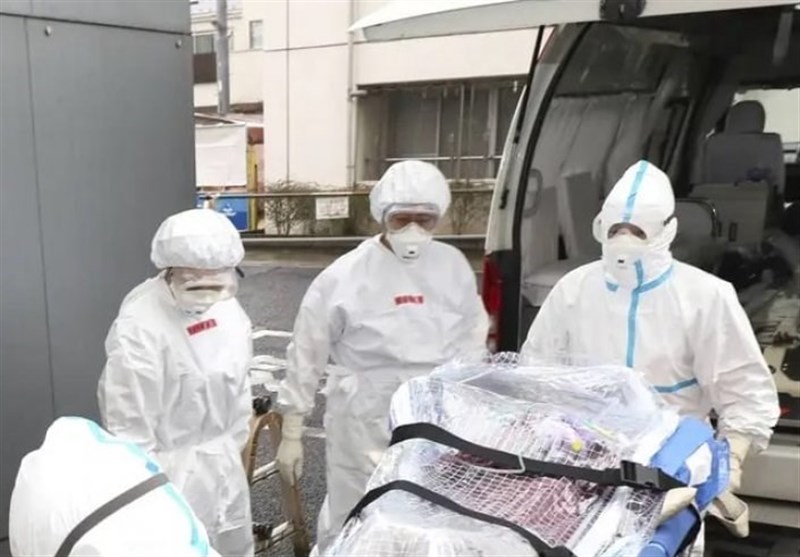Surge in Hospitalization of Young Children Infected with COVID-19 in US
TEHRAN (Tasnim) – The number of hospitalized young children infected with the coronavirus rose precipitously last week to the highest levels since the beginning of the pandemic, according to data released on Friday by the Centres for Disease Control and Prevention.
The increase was observed in children who were four and younger, who were not eligible for vaccination, and the data included children who were admitted to hospitals for reasons other than COVID-19, The New York Times reported.
The rise may be partly explained by the surge of Omicron cases and the spread of other respiratory infections.
But the data does not show a similar steep rise in coronavirus infections among hospitalized children of other ages, and federal health officials are considering the possibility that Omicron may not be as mild in young children as it is older children.
Children infected with the variant are still at much less risk of becoming severely ill compared with adults, and even young children seem less likely to need ventilators than those admitted during previous surges, doctors said.
"We have not yet seen a signal that there is any increased severity in this age demographic," Dr. Rochelle Walensky, the CDC's director, told reporters at a news briefing on Friday.
More than four in 100,000 children aged four and younger admitted to hospitals were infected with the coronavirus as at Jan 1 - double the rate reported a month ago and about three times the rate this time last year.
By contrast, the rate of hospitalized five- to 11-year-olds with COVID-19 was 0.6, roughly the same figure reported over past many months.
Dr.Walensky noted that only 16 per cent of children from five to 11 had been fully vaccinated, and she urged everyone who was eligible for vaccines and boosters to receive them as soon as possible.
"Sadly, we are seeing the rates of hospitalizations increasing for children zero to four, who are not yet currently eligible for COVID-19 vaccination," she said.
"It's critically important that we surround them with people who are vaccinated to provide them protection."
The rise has been noticeable at a number of regional medical centres.
The hospitalizations of young children now are "blowing away our previous Delta wave at the end of the summer, early fall, which had been our highest prior to that", said Dr.Danielle Zerr, a paediatric infectious diseases expert at Seattle Children's Hospital.
Experts are typically cautious about interpreting an increase in paediatric hospitalizations as a sign that a variant is particularly severe in children relative to adults.
There were similar fears about the Delta and Beta variants, but the rise in paediatric hospitalizations then turned out to be more a consequence of the contagiousness of the variants.
This time, too, at least part of the increase in cases is a reflection of Omicron's surge across all age groups. The nation is now recording roughly 600,000 cases on average per day, about one in five of them in children.
"The more kids that get infected, the more you're going to have kids who are going to be sick enough to be hospitalized," said Dr.Yvonne Maldonado, chair of the committee on infectious diseases at the American Academy of Paediatrics and a physician at Stanford University.
At Seattle Children's Hospital, for example, about 21 per cent of children are testing positive for the coronavirus, compared with the average of about 1 per cent and a high during the Delta wave of about 3 per cent.
"That is just a game-changer," Dr. Zerr said of the more recent figures.
Doctors may be quicker to admit a young child than an adult with similar symptoms, and that may account for some of the rising rates in young children. But some experts said the increase this time might be too steep to be explained only by the usual factors.
One alternative hypothesis for the rise may be that young children are particularly vulnerable to infections in the upper airway - exactly where Omicron is thought to be more concentrated in comparison with other variants.
"They're smaller; their airways are smaller," Dr. Kristin Oliver, a paediatrician at Mount Sinai Hospital in New York, said of young children.
"It does seem reasonable in a disease that if it looks like it's affecting the upper airway more, that they would be more impacted," she added.
"They are more at risk for that - for longer, prolonged cases, as well as the hospitalization that can come along with a more severe case."
That may explain why more hospitalized children aged four and younger have tested positive for the coronavirus throughout the pandemic than those five and older. It is also why young children are more vulnerable to other pathogens, like respiratory syncytial virus, and to having the seal-like cough associated with croup.
For parents of young children, the numbers add another layer of worry as they wait for vaccines to become available.
Ms. Alicia Henriquez, a public school teacher in Chicago, has three children, two of them younger than five. Her younger children - Maxi, four, and Sofia, two - are both infected with the coronavirus, but Maxi has no symptoms at all, and Sofia has only a cough.
Still, Ms. Henriquez said she was monitoring their symptoms carefully.
"You don't know if your child is going to end up in the hospital or not, so I think you still have to be careful," she said.
The CDC's new data was collected by COVID-Net, the agency's hospitalization surveillance network, which includes 14 sites and covers about 10 per cent of the population in the United States. The rates are likely to be underestimates because of the lack of availability of tests, according to the agency.
Many children who become severely ill have other conditions or have weak immune systems.
"Those kids are definitely at high risk right now," Dr. Maldonado said. "We're seeing more of them now than we were before."
A coronavirus vaccine is not yet available in the US to children under five and is unlikely to be for a few more months. But many older children are also still unvaccinated.
Fewer than 25 per cent of children from five to 11, and just over 60 per cent of adolescents from 12 to 17, have received at least one dose of a coronavirus vaccine.
"If you're really worried about your child getting sick, you should be vaccinating your child," Dr. Maldonado said. "It's the easiest thing we can do right now to keep our kids healthy."
As at Oct 31, about one in three children hospitalized with COVID-19 was obese.
Still, about half had no other known medical conditions, according to data collected by the CDC.






